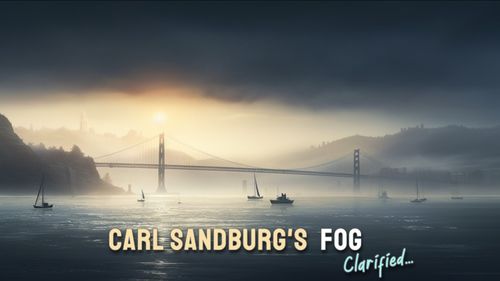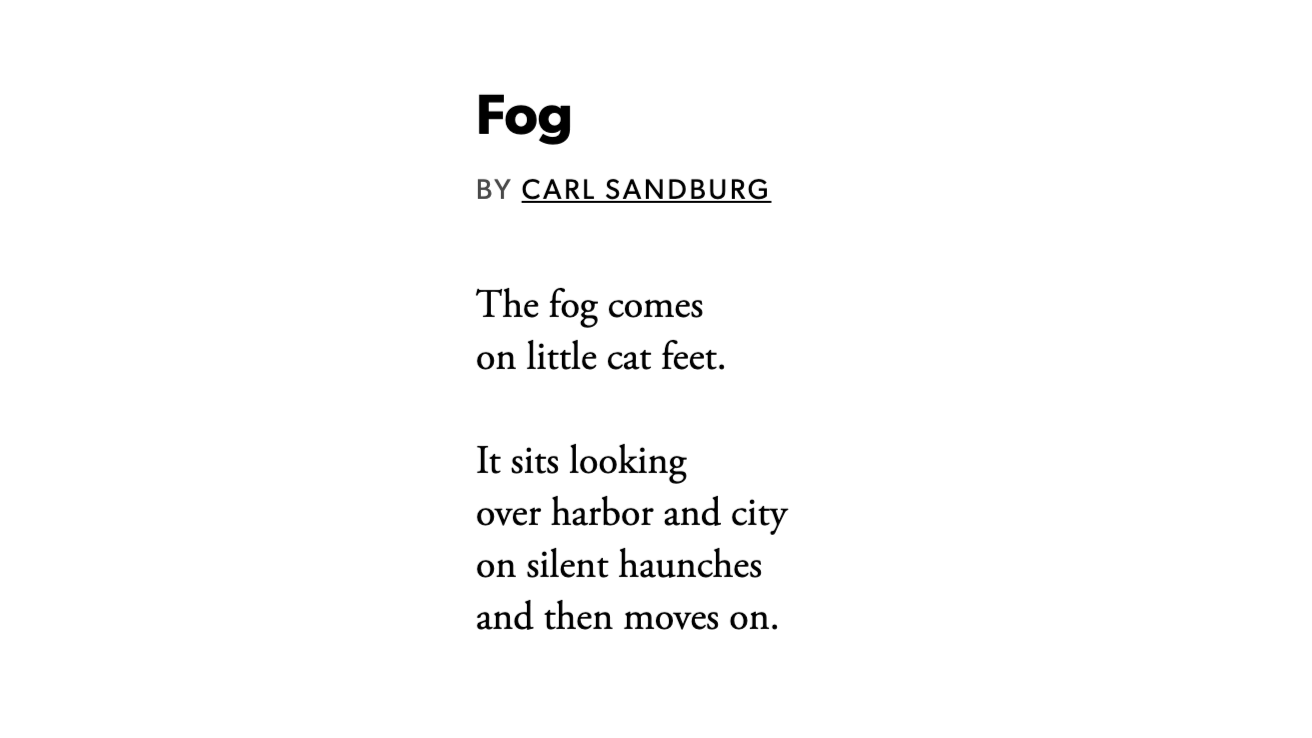Explore the Depths of Carl Sandburg's 'Fog': A 10-Point Guide for the Modern Reader
Jun 26, 2024 · 2 mins read
0
Share

"Fog" by Carl Sandburg, a short yet impactful poem, offers a vivid depiction of fog's gentle arrival and departure, akin to a cat's stealthy movements. This modernist piece, first published in 1916, captures the essence of fog through concise, evocative imagery.
Save
Share
Sandburg employs personification masterfully, likening the fog to a cat on little cat feet. This metaphor is not only visually striking but also imbues the fog with a sense of autonomy and mystery, encapsulating the unpredictability and subtlety of nature.
Save
Share
The poem's structure is notably minimalistic, comprising just six lines. This brevity mirrors the fleeting nature of fog itself, and also the transitory moments in life that, although brief, leave a lasting impression.

Save
Share
Sandburg's choice to avoid traditional rhyme and meter reflects the modernist movement's break from conventional poetry forms. This stylistic choice emphasizes the raw, unstructured beauty of natural phenomena, much like the unpredictable movements of a cat.
Save
Share
The imagery of the fog looking over harbor and city creates a sense of quiet observation and subtle dominance. It suggests a temporary but total immersion of the landscape in a mysterious, ethereal blanket, highlighting nature's pervasive influence.
Save
Share
The line "And then moves on" reveals the transient nature of fog, symbolizing life's impermanent, ever-changing moments. It encourages readers to appreciate the fleeting beauty in their lives, akin to the ephemeral beauty of the fog.
Save
Share
Sandburg's background in journalism is evident in his clear, succinct language. This directness makes the poem accessible yet profound, inviting readers to find depth in simplicity, a valuable perspective for office workers seeking meaning in the mundane.
Save
Share
The era of the poem's publication, during World War I, adds a layer of context. The fog can be seen as a metaphor for the uncertainty and obscurity of the times, offering a subtle commentary on the societal and personal impacts of the war.
Save
Share
"Fog" also reflects the early 20th-century shift towards urbanization. The mention of the city and harbor encapsulates the growing interaction between man and the evolving urban landscape, making the poem resonate with contemporary urban dwellers.
Save
Share
Ultimately, "Fog" stands as a testament to the power of minimalism in poetry. Its ability to convey deep, layered meanings through simple imagery and language makes it an enduring piece, reflecting Sandburg's knack for transforming everyday scenes into profound insights.
Save
Share
0